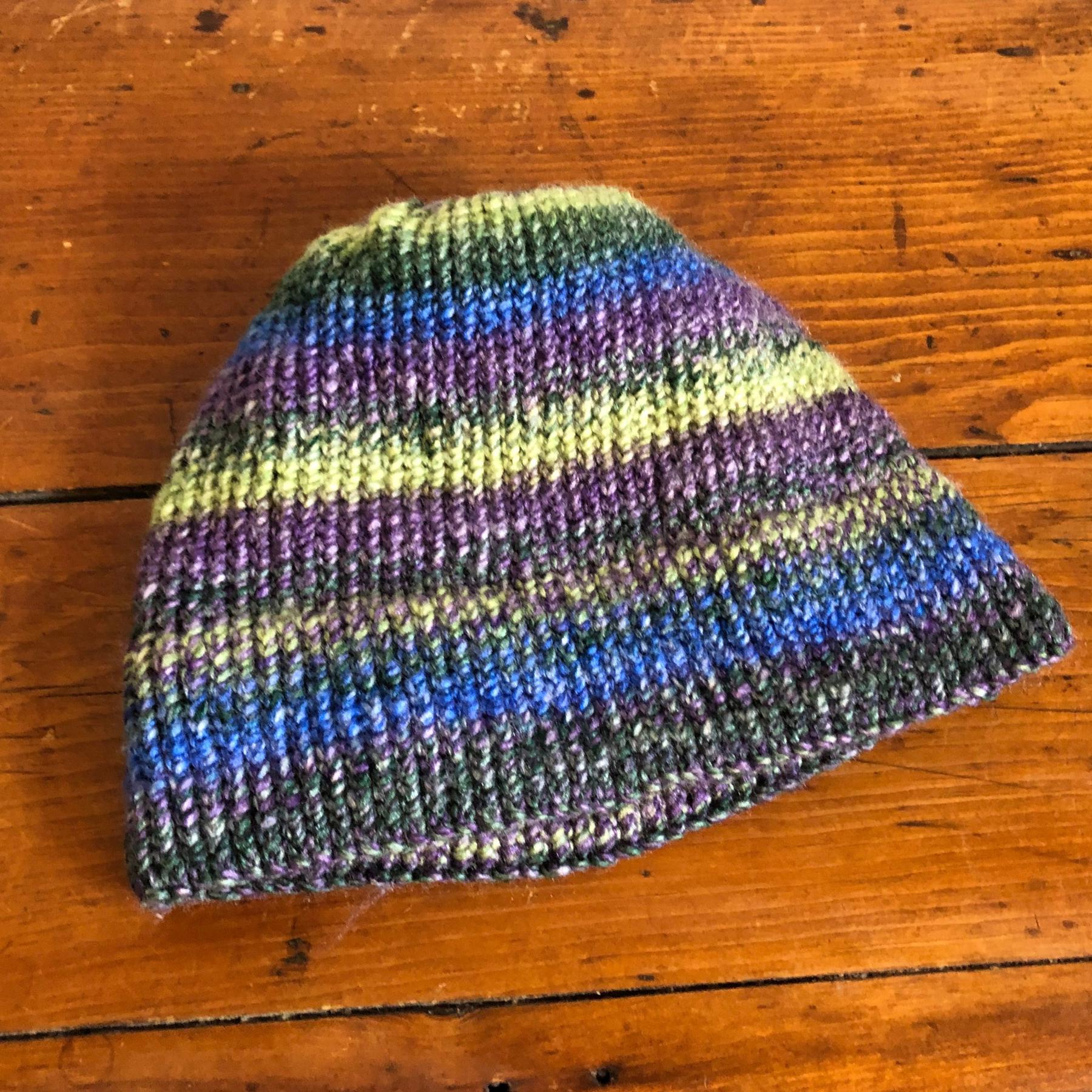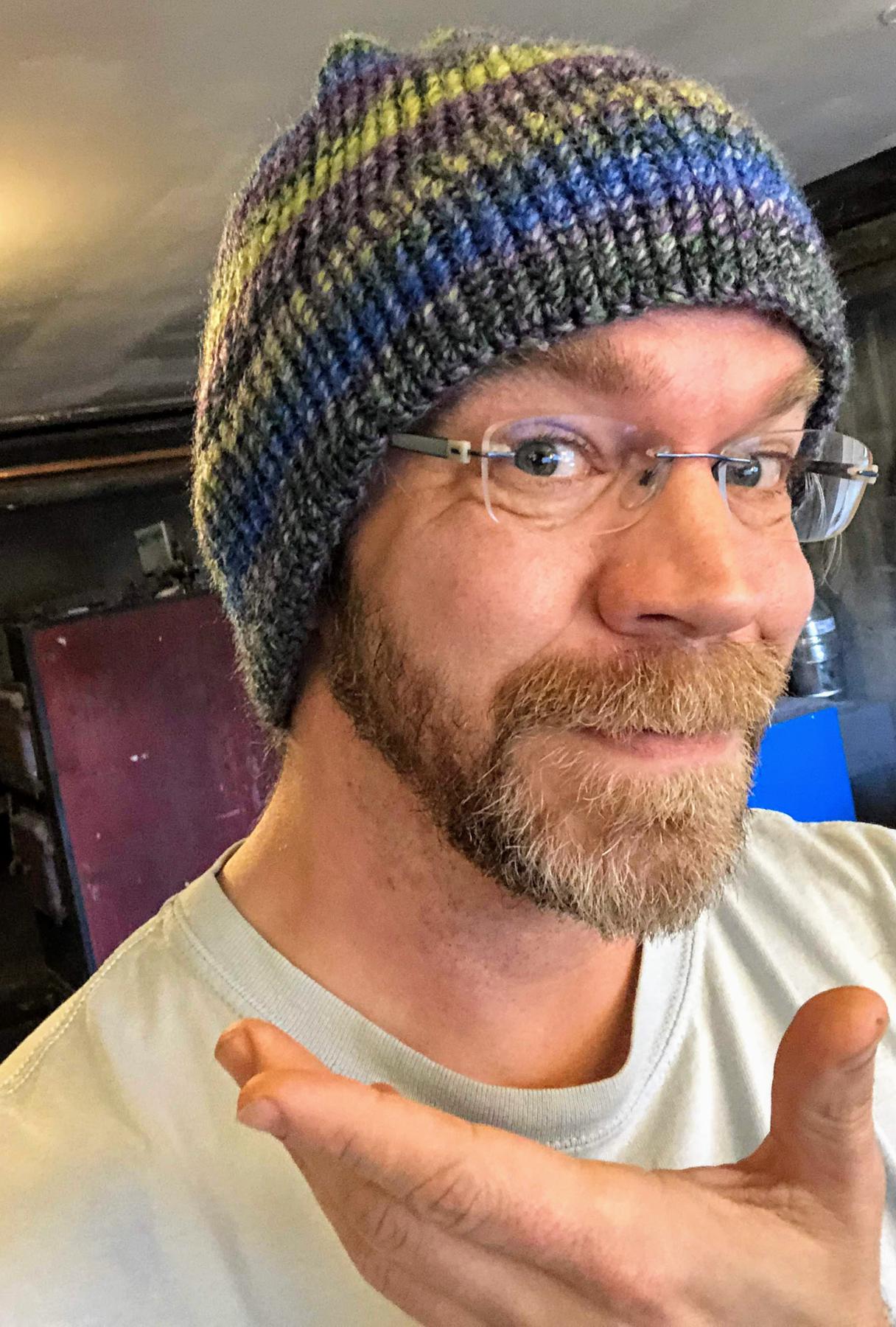
Ann Budd’s book The Knitter’s Handy Book of Patterns continues to teach me new techniques. This project is my second iteration of her “Basic hat” template. The black wool hat I made a couple of weeks ago was the first.
What’s the difference? The wool hat — and most of the hats I have knitted until now — had a ribbed edge. Alternating knit and purl stitches create a section more elastic than the body of the hat, so it hugs a bit closer to your head.
This hat uses a hemmed edge. Stockinette rows get folded over and stitched into the body of the hat. I like the smooth look a hemmed edge produces. The extra volume of the hem provides the snugness needed to keep your hat on your head.
Oh! This was also the first time I used my copy of The Handknitter’s Yarn Guide! See, I had this mystery yarn in my stash. It was thick and self-striping, but that’s all I knew. No idea about the material, or what size needles I should be using. And let’s be honest, “thick yarn” is more than a little subjective. Some people knit with rope, after all.
The Yarn Guide provides a reference of yarn textures and varieties, focused on details that are important for hand knitters. Machine knitters track somewhat different details. It includes nifty details like how a particular yarn material feels, or how it should burn — wool burns slow, acrylic goes up quick. It also describes wraps per inch for establishing the weight of your yarn. “Weight” here is not about mass and gravity, but about expected gauge and needle size.
My 200 gram chunk of mystery self-striping yarn yielded eight and a half wraps per inch. A snip burned quick. This suggested I had a bulky acrylic, and should use size 13-15 (9-10mm) knitting needles.
Except I misread those numbers — three cheers for minor cognitive issues! — and ended up using size 9 (5.5mm) needles. Combine that with the fact that my flat knitting — such as what I used for the gauge swatch — produces a wildly different gauge from my knitting in the round, and. Well.
I made a lovely hat. A hat that was maybe a little too snug for a comfortable fit on my head.

That’s okay though. The hat fits a friend perfectly, and it’s heading home with them as I type.
For future projects, I will make my flat stockinette stitch match my round knitting gauge more closely. The main difference is in my purl stitch, which is looser than my knit stitch unless I pay close attention. When you knit in the round, purl stitches occur less often than when flat. That’s why those projects have a tighter gauge and tighter fit.
So far the hat I am knitting now has only a somewhat tighter gauge than the flat swatch. I could — maybe “should?” — also knit my gauge swatch in the round, but I’m not entirely confident that a gauge tube is what I need. We’ll see. But so far the current hat is the size I expected. That’s good enough for me.
Backlinks
Added to vault 2024-01-15. Updated on 2024-02-01